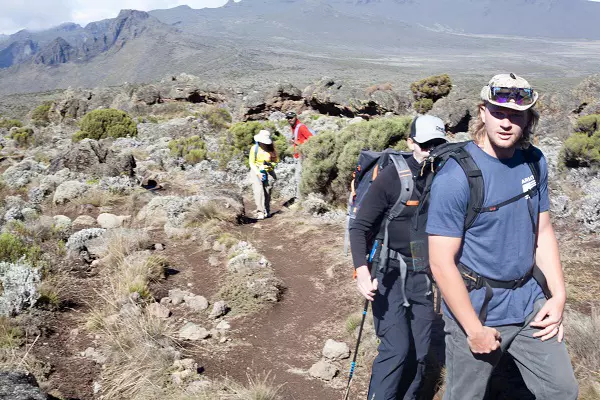
Embarking on the awe-inspiring journey to Climb Kilimanjaro need not break the bank. While conquering Africa's highest peak is a dream for many, it is possible to do so without sacrificing financial prudence. In this comprehensive guide, we unveil strategic tips and insights on how to Climb Kilimanjaro cheaply, ensuring a cost-effective adventure without compromising the awe-inspiring experience of reaching Uhuru Peak.
Marangu or Machame: Opt for budget-friendly routes like Marangu or Machame. These routes offer a balance between affordability and scenic landscapes, making them popular choices for cost-conscious climbers.
Avoid Peak Demand Periods: Climbing during off-peak seasons can result in lower costs for permits, accommodations, and tour packages. Consider planning your climb during less busy months to save on expenses.
Seek Budget Airlines and Flexible Dates: Explore budget airline options and be flexible with your travel dates. Booking in advance and being open to mid-week flights can yield significant savings on airfare.
Quality vs. Cost: Research and compare different tour operators. While looking for budget options, ensure that the operator maintains safety standards and provides a reasonable level of service to enhance your climbing experience.
Join Group Expeditions: Group climbs often come with discounted rates. Consider joining a group expedition, which not only reduces costs but also adds a social element to your Kilimanjaro adventure.
Independent Travel Arrangements: For the more adventurous and experienced, consider planning the climb independently. This involves coordinating permits, accommodations, and logistics without the assistance of a tour operator.
Avoid Exorbitant Rental Fees: Renting gear locally in Tanzania can be more affordable than bringing or renting equipment from your home country. This reduces excess baggage fees and rental costs.
Hostels and Budget Lodges: Choose budget-friendly accommodations in Moshi or Arusha, the gateway towns to Kilimanjaro. Hostels, budget lodges, or guesthouses can provide comfortable stays at lower prices.
Immerse in Local Culture: Consider homestay options in nearby villages. Not only does this provide a more immersive cultural experience, but it can also be a cost-effective alternative to traditional accommodations.
Streamlined Packing: Pack only the essentials to avoid excess baggage fees. Carrying unnecessary items can increase costs, especially if you need to hire extra porters to handle heavier loads.
Budget-Friendly Food Options: If feasible, bring portable camping stoves or inquire with your tour operator about the possibility of cooking your own meals during the climb. This can reduce expenses associated with dining at higher-altitude camps.
Avoid Bottled Water Costs: Bring water purification tablets to treat water from natural sources. This eliminates the need to purchase expensive bottled water along the route, contributing to significant cost savings.
Customize Your Package: Negotiate with tour operators to customize your package. If certain inclusions are not essential, inquire about excluding them to reduce overall costs without compromising safety.
Keep an Eye on Promotions: Periodically check for discounts, promotions, or special offers from tour operators. Some companies may provide deals during specific times of the year or for early bookings.
Use Local Currency: When making purchases in Tanzania, especially in local markets, use the local currency to avoid unfavorable exchange rates and additional fees associated with foreign transactions.
Climbing Kilimanjaro on a budget is not only feasible but also adds a layer of resourcefulness and adventure to the experience. By implementing these cost-saving tips, you can embark on the journey to Uhuru Peak without compromising the essence of the climb. Remember that a budget-friendly ascent is not about skimping on the majesty of Kilimanjaro but rather about optimizing resources to make this iconic adventure accessible to a broader spectrum of aspiring climbers. Whether you choose the Marangu Route, the Machame Route, or another path to the summit, climbing Kilimanjaro cheaply is a testament to the affordability of pursuing dreams and conquering extraordinary heights.